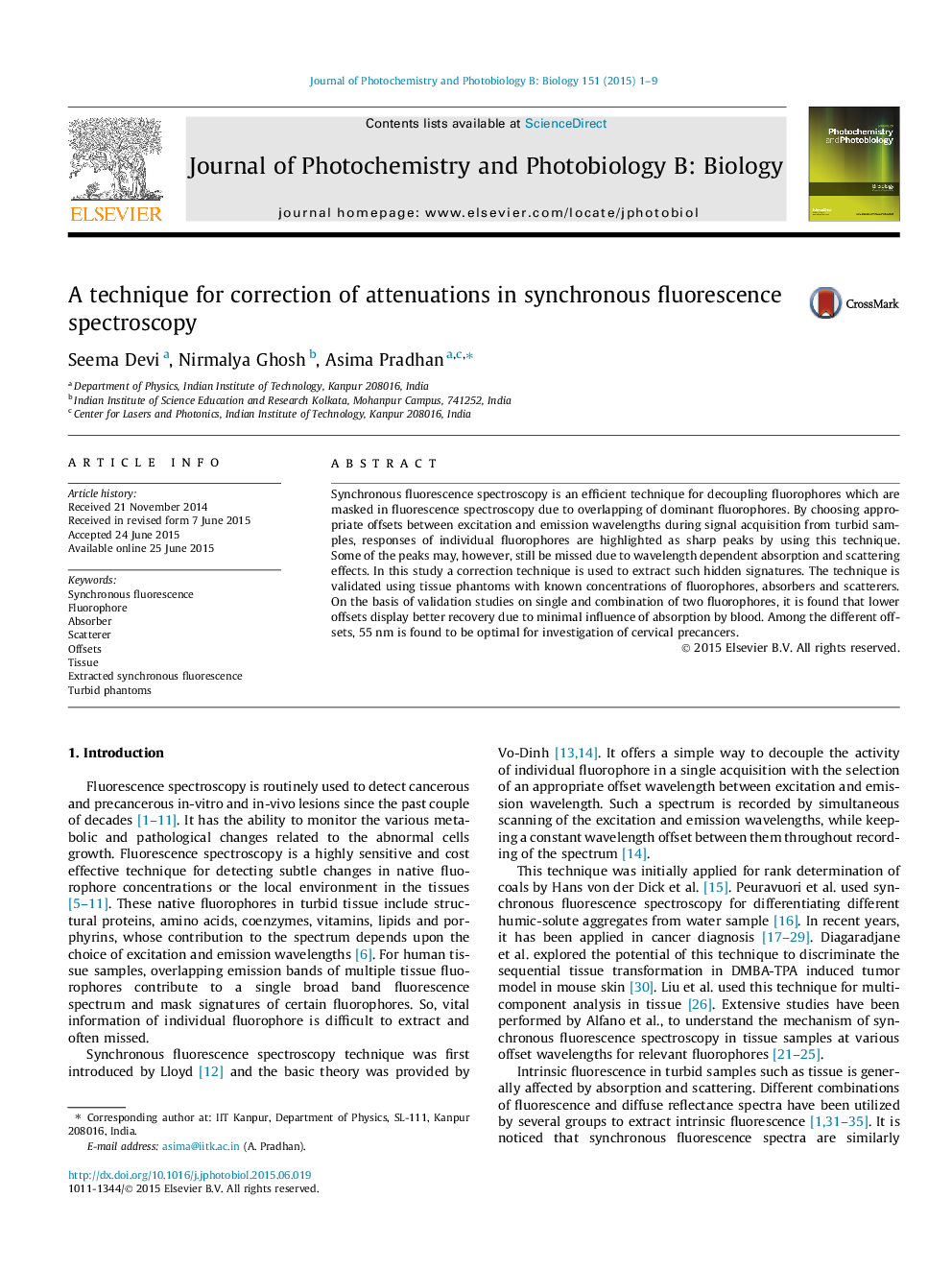| Article ID | Journal | Published Year | Pages | File Type |
|---|---|---|---|---|
| 30208 | Journal of Photochemistry and Photobiology B: Biology | 2015 | 9 Pages |
•Correction technique is developed to obtain intrinsic synchronous fluorescence.•Technique uses a combination of synchronous fluorescence and elastic scattering.•This is validated using turbid phantoms of single and two fluorophores.•Lower offsets display better recovery due to minimal influence of blood absorption.•55 nm offset is found to be optimal for cervical precancers detection.
Synchronous fluorescence spectroscopy is an efficient technique for decoupling fluorophores which are masked in fluorescence spectroscopy due to overlapping of dominant fluorophores. By choosing appropriate offsets between excitation and emission wavelengths during signal acquisition from turbid samples, responses of individual fluorophores are highlighted as sharp peaks by using this technique. Some of the peaks may, however, still be missed due to wavelength dependent absorption and scattering effects. In this study a correction technique is used to extract such hidden signatures. The technique is validated using tissue phantoms with known concentrations of fluorophores, absorbers and scatterers. On the basis of validation studies on single and combination of two fluorophores, it is found that lower offsets display better recovery due to minimal influence of absorption by blood. Among the different offsets, 55 nm is found to be optimal for investigation of cervical precancers.
